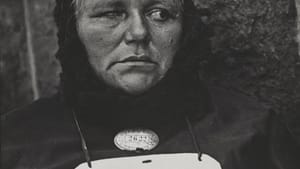Stay in the Loop
BSR publishes on a weekly schedule, with an email newsletter every Wednesday and Thursday morning. There’s no paywall, and subscribing is always free.
Depth of exposure
Paul Strand at the Art Museum (second review)

American photographer Paul Strand (1890-1976) would have made a terrible paparazzo. Rather than jostling for advantage in a crowd of shooters, he traveled alone and shot low-value targets, such as street people and rocks. Rather than yelling at subjects, he deflected attention, making them think he was not interested in them at all. Strand didn’t invade scenes so much as he infiltrated them. He waited and observed, becoming invisible, so that he could depict things as they really were.
Strand is the focus of an international show presented by the Philadelphia Museum of Art, which holds the world’s most comprehensive collection of his work as a result of its recent acquisition of more than 3,000 prints from the Paul Strand Archive. Paul Strand: Master of Modern Photography exhibits room after room of 250 prints as well as selected negatives, Strand’s cameras, and collaborative works: films and digitized versions of his books.
The wealth of photographs on exhibit belie the fact that Strand took comparatively fewer exposures than most professionals. Rather than expending glass or film negatives, time was the currency he spent lavishly. Exposing himself with contemplative fervor to a location, Strand sought exact places and precise moments. Coming upon a spider web in the Maine woods, its dewy filaments stretched across the bark of a tree, Strand took more than an hour to photograph it. He planted his tripod, opened the aperture, and waited as the low forest light gradually painted in details. At the first hint of a blurring breeze, Strand capped the lens to protect image sharpness, removing it only when perfect stillness returned.
In Ailanthus Leaves, Maine (1927), Strand’s meditative technique reveals bouquets of leaves so softly exposed that they appear to emerge before the viewer’s eyes from the velvety darkness. In Backyard, Winter, New York (1917), he photographed a sunny rooftop after a snow, its low brick walls capped with lacy, watery mounds. You can almost hear the drip of melting snow.
Using decoys
Unlike plants and buildings, however, people react to scrutiny. So as a young photographer making street portraits in New York City, Strand resorted to trickery: He carried two cameras, one a decoy, the other up his sleeve, to surreptitiously capture subjects after they tired of observing him and resumed whatever they were doing. Though Strand made just a dozen such pictures, they are memorable, including a yawning, ruddy-faced woman who appears to have spent her life over a boiling washtub, and a pair of elderly men, leaning into their park-bench conversation. One of this series is among Strand’s best known images: an obviously sightless woman wears a sign around her neck that reduces her to her handicap, “Blind” (Blind Woman, New York, 1916). In the 1930s, Strand used a similar tactic in Mexico: Employing a camera with a prism attached to the lens, he photographed the scene off to one side.
Mexico is just one of the many places where Strand visited repeatedly or even took up residence. The last several decades of his career were devoted to extensive travel that allowed him to develop a sense of place, people, and period in his work. On Canada’s Gaspé Peninsula, in a New Hampshire town hall, or in the village of Uist in Scotland’s Hebrides, Strand’s approach was the same as it had been with the cobweb in the forest: to know the subject as fully as possible without disrupting it by his presence. So he sat with the Scots and listened to their Gaelic songs and photographed Kate Steele’s gnarled hands, which told her life story more effectively than her face.
Collaborating with writers and editors, Strand produced books devoted to New England (Time in New England, 1950), Luzzara, Italy (Un Paese: Portrait of an Italian Village, 1955), Ghana (Ghana: An African Portrait, 1976), and France, where he lived from 1950 to his death in 1976. They leave a reader with the feeling of having been there with him.
In a photograph, longer exposure results in greater depth of field. Paul Strand demonstrated that the same is true in a photographer.
To read another review by Victor L. Schermer, click here.
To read another review by Robert Zaller, click here.
What, When, Where
Paul Strand: Master of Modern Photography. Through January 4, 2015 at Philadelphia Museum of Art, 2600 Benjamin Franklin Parkway, Philadelphia. 215-763-8100 or http://www.philamuseum.org/.
Sign up for our newsletter
All of the week's new articles, all in one place. Sign up for the free weekly BSR newsletters, and don't miss a conversation.
